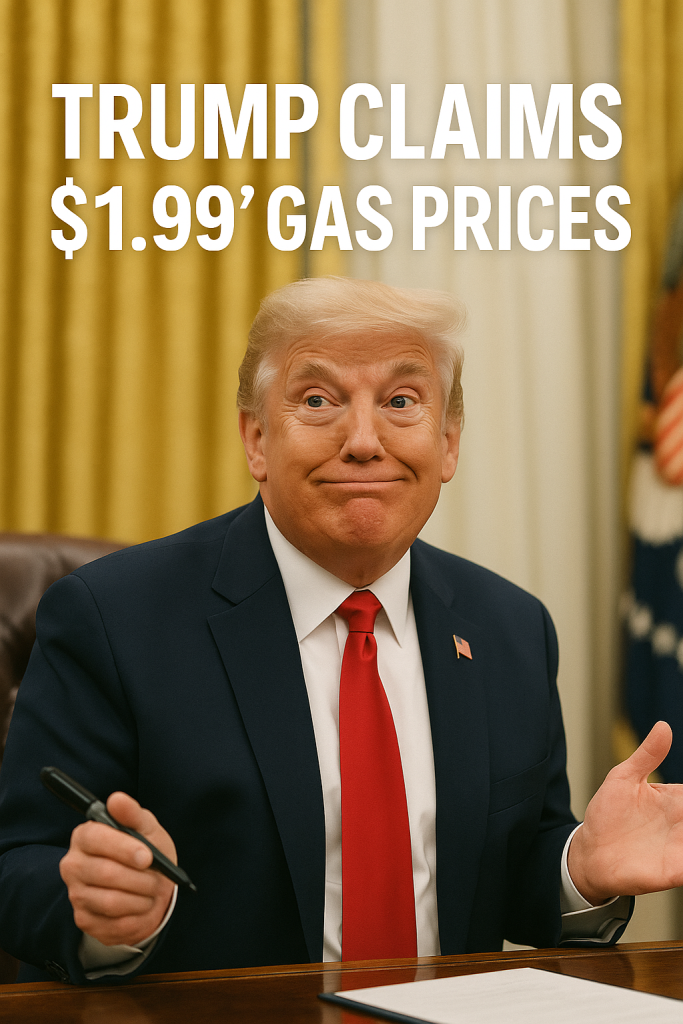In the midst of a heated political climate and ongoing economic challenges, former President Donald Trump has once again sparked controversy with his latest claim that gas prices are at an all-time low of $1.99 per gallon. This statement, widely circulated on social media and during recent campaign events, has been met with sharp criticism and fact-checking, revealing a troubling pattern of misinformation regarding the national cost of living.
Trump’s assertions about gas prices have drawn significant scrutiny because they starkly contrast with current market realities. As of April 2024, the average national price for regular unleaded gasoline hovers around $3.50 to $3.70 per gallon, according to multiple industry tracking services. Prices can fluctuate based on location, but a nationwide average below $2.00 has not been seen in recent years and would represent a dramatic, unprecedented drop given present economic conditions.
So how did this claim gain traction? The former president appears to be referencing isolated gas prices from specific locales or time frames that do not reflect the broader national picture. Such tactics are part of a larger strategy to suggest that economic conditions under the current administration are far worse than portrayed, thereby bolstering his campaign narrative. However, experts and analysts warn that cherry-picking data like this misleads the public and oversimplifies complex economic issues.
Critics argue that Trump’s repeated dissemination of misleading statements about everyday expenses, particularly gas prices, contributes to confusion during a period when many Americans are genuinely feeling the strain of inflation and rising costs. The cost of living, especially fuel prices, directly impacts household budgets, affecting everything from commuting expenses to grocery bills. Accurately informing voters about these realities is crucial for public trust and sound policy debates.
Gas prices have been volatile over the past few years, influenced by geopolitical tensions, supply chain disruptions, shifts in global oil production policies, and fluctuating demand. While there have been brief periods where prices dipped close to $2.00 per gallon, these were generally localized and short-lived instances, not reflecting sustained national pricing trends.
In addition to gas prices, Trump’s commentary often extends to broader inflation and cost-of-living measures, where his claims frequently conflict with data from official economic reports. Analysts note that such discrepancies underscore a persistent issue: the frequent use of distorted or selective economic information in political messaging to sway public opinion.
This specific gas price assertion comes at a time when voters remain deeply concerned about inflation’s impact on their daily lives. Addressing these concerns with transparency and factual data is critical, yet the ongoing pattern of misleading statements from high-profile figures threatens to muddy public understanding and policy discussions.
As the 2024 election cycle intensifies, the debate over the nation’s economic health, including the affordability of essentials like gasoline, will remain front and center. Voters and observers are urged to seek comprehensive, accurate information beyond sensational claims to better evaluate how current policies affect their wallets.
Ultimately, the clear disparity between Trump’s $1.99 gas price claim and actual market figures serves as a reminder of the importance of vigilance and fact-checking in political discourse. In an era where misinformation can spread rapidly, staying informed with verified data is essential for effective civic engagement.



